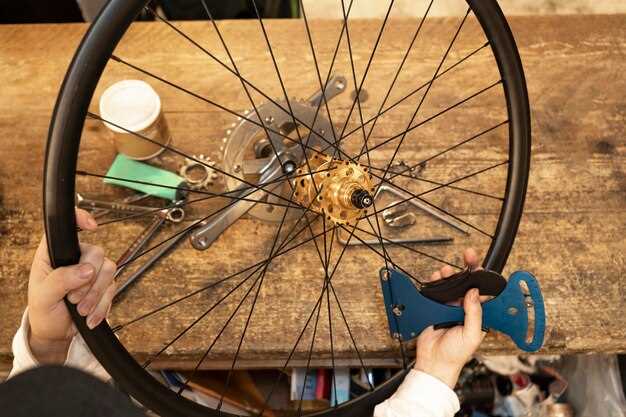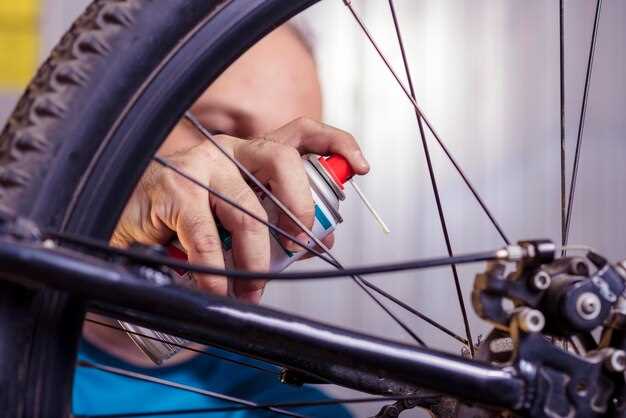
Maintaining your race bike’s performance and longevity relies significantly on regular cleaning. Proper cleaning techniques not only enhance the bike’s aesthetics but also contribute to its efficiency on the road. However, it’s crucial to approach cleaning with care to avoid damaging sensitive components.
Understanding the materials used in your bike’s construction is essential. Race bikes often feature lightweight materials such as carbon fiber and aluminum, which require specific cleaning methods. Using the wrong cleaning agents or abrasive tools can lead to scratches, corrosion, or structural weakening.
In this article, we will explore effective strategies for cleaning your race bike while ensuring its parts remain intact and functional. From selecting appropriate cleaning solutions to utilizing soft brushes and microfiber cloths, we will guide you through each step to make your bike maintenance routine efficient and safe.
Choosing the Right Cleaning Products for Your Bike

When it comes to cleaning your race bike, selecting appropriate products is crucial to ensure safety and longevity of the components. Using harsh chemicals can damage finishes, degrade rubber or plastic parts, and erode essential lubricant from crucial areas.
First and foremost, opt for biodegradable and eco-friendly cleaners. These products are less likely to damage the environment and are safer for you and your bike. Look for brands that specifically cater to bicycles, as they are formulated to be effective while being gentle on various surfaces.
Ensure that the cleaning products you choose are suitable for the materials on your bike. For instance, aluminum frames require different care than carbon fiber. Products labeled as “safe for all surfaces” are usually a good bet, but always refer to the manufacturer’s guidelines to avoid any mishaps.
Consider using a dedicated degreaser for the drivetrain. A suitable degreaser will remove built-up grime without negatively affecting metal surfaces. After applying any cleaning agent, thorough rinsing is important to prevent residue buildup that could lead to corrosion.
Another aspect of safety involves using products that do not contain harmful solvents. Avoid cleaners with strong solvents that can compromise the integrity of bike components or pose health risks during application. Read labels carefully.
In addition to cleaners, invest in cleaning tools that are designed specifically for bikes, such as soft brushes, microfiber cloths, and non-abrasive sponges. These help to clean effectively while reducing the risk of scratching or damaging frames and components.
Ultimately, selecting the right cleaning products not only enhances your bike’s appearance but also contributes to its overall performance and lifespan. Prioritizing safety through careful selection will pay off in the long run.
Step-by-Step Cleaning Process to Avoid Damage

Start by gathering all necessary cleaning supplies, ensuring you have a gentle bike wash, warm water, brushes, rags, and a chain cleaner. Choose a shaded area for cleaning to prevent the sun from drying soap and water too quickly, which can lead to streaks.
Next, before you begin, ensure your bike is stable. Use a bike stand if available, or flip the bike upside down, placing it on the handlebars and saddle to avoid contact with the ground. This helps prevent scratches on your components.
Begin with a thorough inspection of your bike. Look for any damaged parts or loose components that might be affected during the cleaning process. Address any issues beforehand to avoid further damage.
Rinse your bike with water to remove loose dirt and debris. Use a low-pressure setting to minimize the risk of forcing water into delicate areas, such as the bottom bracket and headset.
Apply the gentle bike wash using a soft sponge or cloth. Work from the top down, starting with the frame and moving to components like the wheels and drivetrain. Avoid using abrasive materials that could scratch the surface.
For the drivetrain, use a specific chain cleaner to remove grime. Apply it carefully, ensuring you do not splash cleaner onto the frame. Scrub gently with a dedicated brush to avoid damaging the chain links.
After cleaning, rinse the bike again thoroughly to remove any soap residue. Ensure you rinse all components, as leftover soap can attract dirt and cause wear over time.
Dry the bike using a microfiber cloth to prevent water spots. Pay special attention to areas where water can collect, such as the brake calipers and bottom bracket.
Finally, lubricate the chain and any other moving parts as needed. This step is crucial for maintaining performance and preventing damage from rust or corrosion. Always use a bike-specific lubricant to ensure safety and compatibility.
Safety Tips for Cleaning Your Race Bike Properly
Cleaning your race bike is essential for maintaining its performance and longevity. However, it is crucial to do so safely to avoid any damage. Here are some important safety tips to keep in mind while cleaning your bike:
- Use the Right Tools: Invest in high-quality cleaning tools specifically designed for bikes. This includes brushes, sponges, and cloths that won’t scratch surfaces.
- Choose Safe Cleaning Products: Opt for biodegradable and non-corrosive cleaning solutions. Avoid harsh chemicals that can damage components or paint finishes.
- Protect Your Bike’s Components: Cover sensitive areas such as the bottom bracket and hubs with protective tape or plastic bags to prevent water intrusion during cleaning.
- Avoid High-Pressure Water: Do not use high-pressure washers on your bike, as they can force water into bearings and electronic components, leading to damage.
- Be Cautious with Lubricants: After cleaning, apply lubricants carefully. Avoid over-lubricating or applying products on braking surfaces which could affect performance.
Following these safety tips will help ensure that you clean your race bike effectively without risking damage. Regular maintenance and cleaning not only enhance the bike’s performance but also extend its lifespan.
